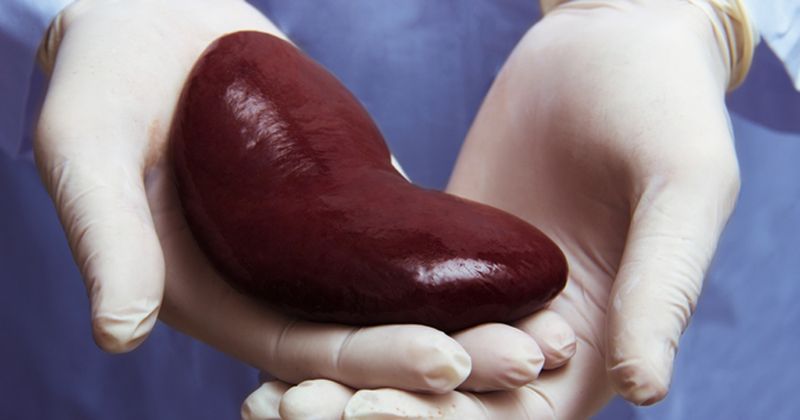DAPA-CKD: Dapagliflozin prolongs survival in CKD with, without type 2 diabetes
Treatment with dapagliflozin significantly reduced renal failure, cardiovascular death or hospitalization for heart failure, and prolonged survival among adults with chronic kidney disease with and without type 2 diabetes, study data show.

“These new data extend the beneficial effects of SGLT2 inhibitors, in particular dapagliflozin, from patients with type 2 diabetes to patients without diabetes,” Hiddo J.L. Heerspink, PhD, clinical pharmacologist in the department of clinical pharmacy and pharmacology at University Medical Center Groningen, Netherlands, told Healio. “If implemented, these data suggest that dapagliflozin will be a long-awaited new treatment option for many patients with CKD, regardless whether or not they have diabetes.”

SGLT2s in more severe CKD
Heerspink and colleagues analyzed data from 4,304 adults with or without type 2 diabetes and an estimated glomerular filtration rate of 25 mL/min/1.73 m2 to 75 mL/min/1.73 m2 (CKD stages 2-4) and albuminuria; participants were recruited from 21 countries. Within the cohort, 2,906 participants had type 2 diabetes (mean age, 64 years; 33.2% women; 53% white) and 1,398 participants did not have diabetes (mean age, 56 years; 32.9% women; 53.6% white). All participants were receiving maximally tolerated angiotensin-converting enzyme inhibitor or angiotensin receptor blocker therapy.
Researchers randomly assigned participants 10 mg once-daily dapagliflozin (Farxiga, AstraZeneca; n = 2,152) or placebo (n = 2,152). The primary endpoint was a composite of sustained decline in eGFR of at least 50%, end-stage renal disease or death due to kidney-related or CV causes. The findings were published in The New England Journal of Medicine.
As Healio previously reported, AstraZeneca stated in March that the DAPA-CKD trial would be stopped early, per recommendation from the independent data monitoring committee, after investigators reported an “overwhelming benefit” for reduction in worsening renal function or renal death compared with placebo.
“The last patient was scheduled on June 12 of this year, at which time the median follow-up in the trial was 2.4 years,” Heerspink said during an online presentation at the virtual European Association for the Study of Diabetes annual meeting.
During a median 2.4 years, the primary outcome occurred in 197 participants (9.2%) in the dapagliflozin group and 312 participants (14.5%) in the placebo group, meaning patients in the dapagliflozin group had a 39% lower risk for the primary endpoint compared with the placebo group (HR = 0.61; 95% CI, 0.51-0.72), with a number needed to treat to prevent one primary outcome event of 19, Heerspink said.
In a series of secondary analyses, participants in the dapagliflozin group also had a 44% lower risk for the combined renal outcome of sustained decline in eGFR of 50% or more, ESRD or renal death — but not CV death — compared with placebo.
“The risk of the combined endpoint of either cardiovascular death or hospitalization for heart failure was also 29% lower in the dapagliflozin group, backing up the results of the DAPA-HF study, which was also published in The New England Journal of Medicine during EASD’s Annual Meeting in 2019,” the researchers stated in a press release announcing the findings.
All-cause mortality was significantly different between the dapagliflozin and placebo groups (4.7% vs. 6.8%), with an HR of 0.69 (95% CI, 0.53-0.88), meaning those in the dapagliflozin group had a 31% lower risk for death from any cause.
The rates of adverse and serious adverse event rates were similar for the dapagliflozin and placebo groups. Researchers did not observe incidence of diabetic ketoacidosis or severe hypoglycemia among patients without type 2 diabetes.
“Dapagliflozin was well tolerated in this population, in keeping with the established safety profile,” Heerspink told Healio.
‘We urgently need these agents’
In commentary after the presentation, Chantal Mathieu, MD, PhD, professor of medicine at Katholieke Universiteit Leuven, Belgium, repeatedly called the study findings “spectacular,” adding that the findings prove dapagliflozin “is a winner.”
“They were the first to demonstrate, in a vast amount of people with diabetes and nondiabetic kidney disease, that this class of agents, in particular dapagliflozin, works,” Mathieu said. “What was also of interest was they expanded [recruitment] not only to people with a urinary albumin to creatinine ratio of 200 to 5,000 mg/g ... but also were brave enough to bring down the [included] eGFR range even lower than what we saw in CREDENCE, namely, to 25 mL/min/1.73 m2.”
Mathieu also highlighted the global scale of the study, but said it was concerning that more Black participants were not enrolled in DAPA-CKD, citing the higher incidence of CKD among Black adults.
“What to me as an endocrinologist was also important is this [beneficial effect] happening at eGFR levels where the effect on HbA1c is usually negligible,” Mathieu said. “This is such an important message now, together with data from other studies like CREDENCE. We need to talk to the regulators and payors. We urgently need these agents at eGFR [levels] as low as 25 mL/min/1.73 m2.”








